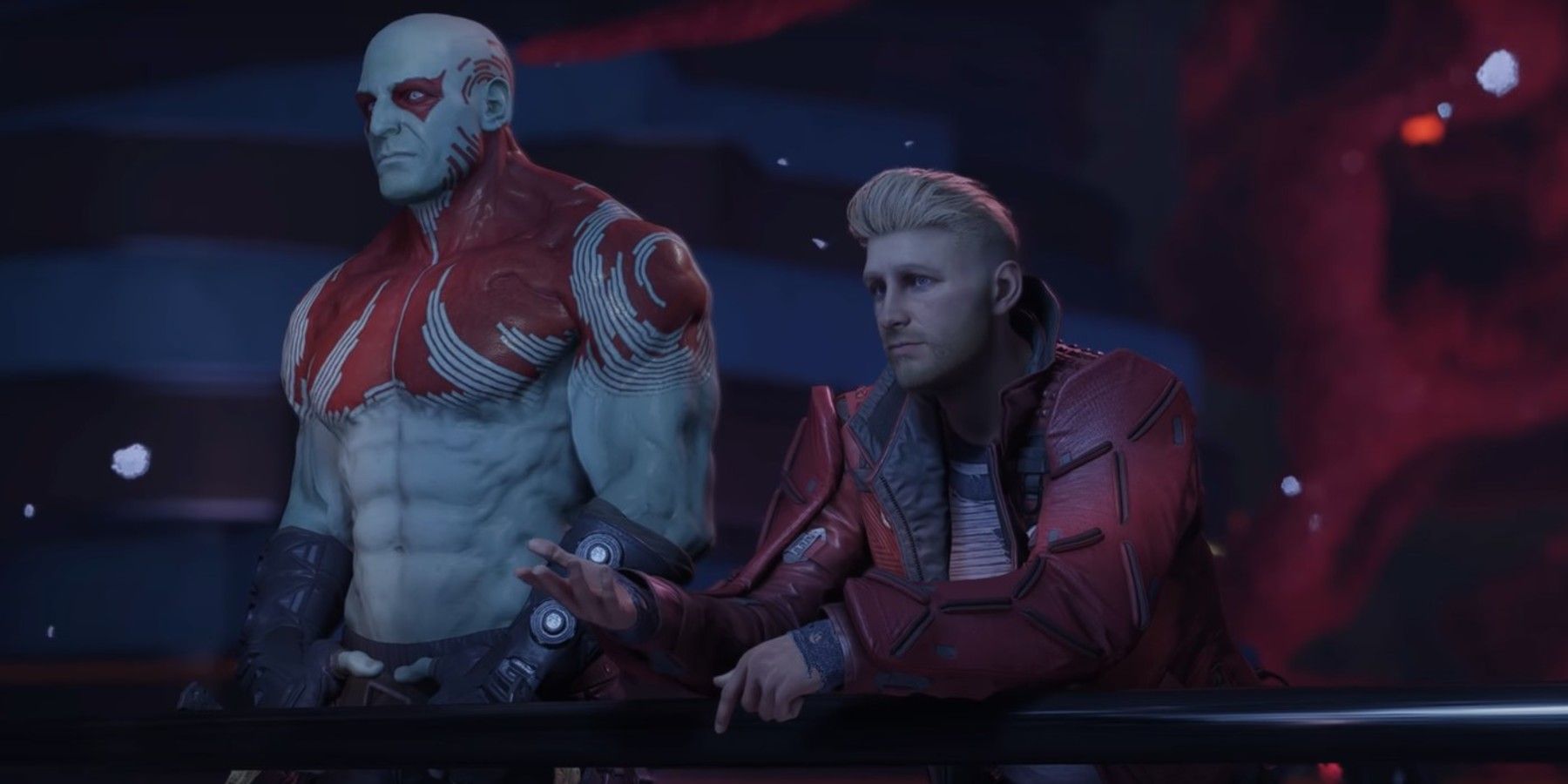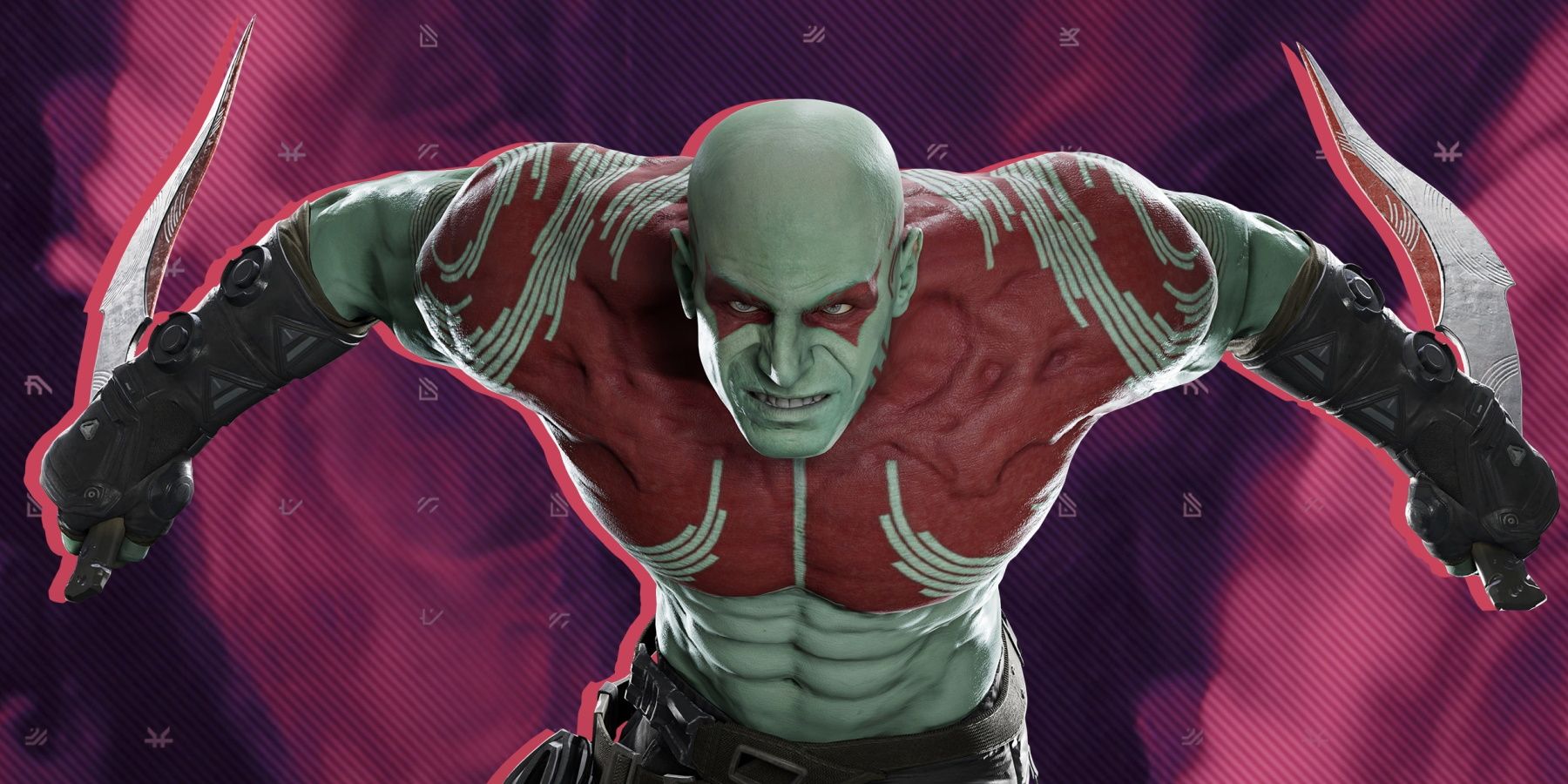With the MCU being such a massive project and so many characters needing time to shine, it makes sense that some stories would need to be adjusted in order to fit into the larger narrative. Such is the case with Drax in the Guardians of the Galaxy films. While he is a source for some of the best jokes in the movies, and Dave Bautista plays him brilliantly, there are only a few scenes that really drive into his tragic backstory.
While these scenes are excellent, like Mantis feeling Drax’s sorrow in Guardians of the Galaxy Vol. 2, the latest game does an even better job of acknowledging his origins. More importantly, he is treated as the powerhouse that he is in the comics, something that the MCU has yet to properly capture. Given how well Drax’s backstory is explored in the game, it is arguably even better than it is in the comics, and fans of the Destroyer should make sure to check out Eidos Montreal’s Guardians of the Galaxy because of that.
Exploring All Aspects Of Drax’s Story
As many comic readers will know, Drax’s backstory is deeply tied to the iconic villain Thanos. In his pursuit of lady Death, The Mad Titan eventually found himself on Drax’s planet. As he is known to do, he wreaked havoc, killing many Katathians in the process. Drax found his wife and daughter amongst the corpses, vowing to get revenge on Thanos.
A neat touch by Eidos Montreal is the confirmation that Thanos defeated Drax in their first meeting, as this immediately makes it clear just how dangerous the father of Gamora and Nebula can be. After this defeat, Thanos left Drax and some other Katathian warriors alive to send a message to other survivors, and everyone but Drax went to fight Fing Fang Foom in order to redeem themselves. Drax, however, remained consumed by rage.
Through the use of magic, Drax was able to link himself to Thanos, something that allowed him to track the villain wherever he went. Eventually, he found him alone on a distant moon, and the two had a fight that lasted days. Supposedly, Drax landed the last hit on Thanos before passing out, with the villain not seen since. While Drax believes that he is still alive, this is one important part of Drax’s backstory that the films have not touched on. In the comics, Drax kills Thanos, displaying his power and establishing himself as an important figure in the Marvel universe.
Aside from making Drax as powerful as he is in the comics, the games tell his story brilliantly. A missable conversation details the fight with Thanos, allowing players invested in finding Guardians of the Galaxy’s collectibles to learn about Drax. Through these same collectibles, players can learn about how violent and cruel Drax was on his path to revenge, as well as his time in the prison known as the Kyln. A beautiful and entirely optional conversation on Knowhere sees Drax telling Star-Lord about the Katathian afterlife, something that would be nice to see on the big screen one day. Missable conversations also detail Drax’s culture, with everything from his tattoos to his people’s heroes discussed.
While Drax still has the standout humor seen in the Guardians of the Galaxy movies, he has more power and more depth on top of that. When Mantis takes the Guardians into his mind, players get to see him interacting with his family, with his goodbye arguably being the saddest moment in the entire game. By exploring this backstory at so many different points in the game, and making extra details available alongside what is shown in the main story, Eidos Montreal ensures that Drax is so much more than comedic relief.
Marvel’s Guardians of the Galaxy is available now on PC, PS4, PS5, Switch, Xbox One, and Xbox Series X.


